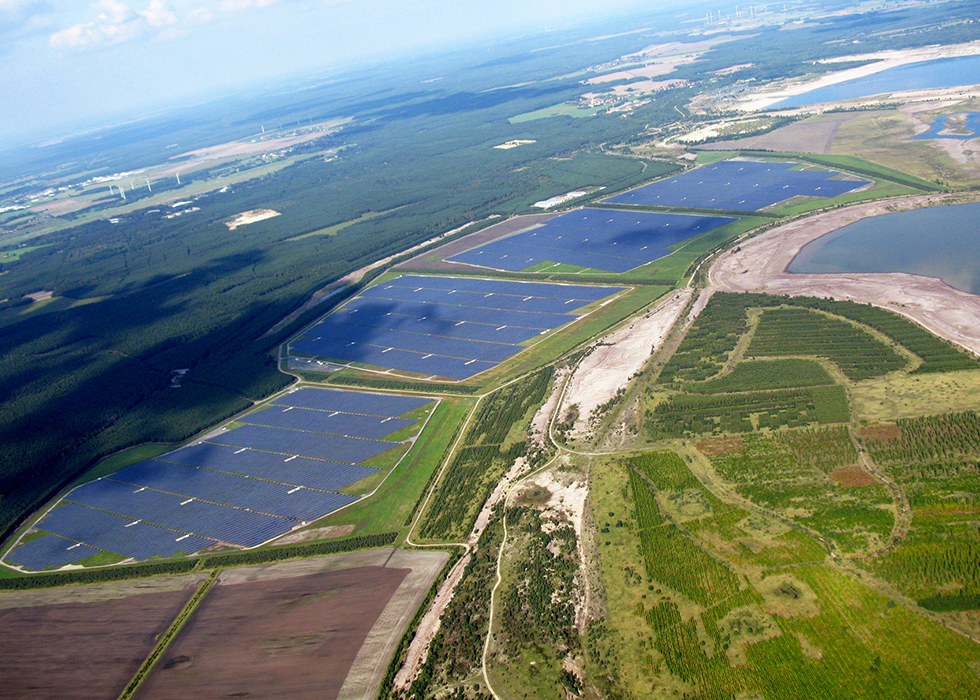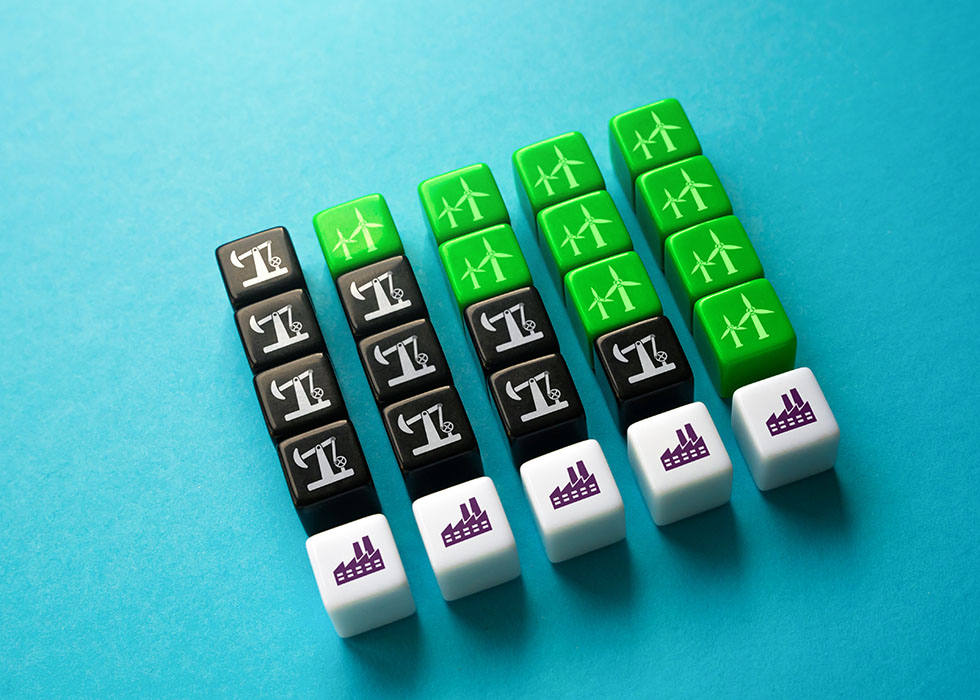Signals of Progress: 5 Pieces of Positive Climate News to Celebrate Earth Day

The effects of climate change are being felt around the world and the time to act is now.
Global surface temperatures have been rising by an average of 0.08 degrees Celsius (0.14 degrees Fahrenheit) per decade since 1880, with the rate of warming more than doubling since 1981. Recognizing the need for action, nations around the world convened in 2015 to set actionable goals with the aim of combatting climate change, calling this international treaty the Paris Agreement.
However, recent reports have found that the world is currently falling behind the targets agreed to in Paris. Failing to meet these goals and keep global temperatures under 1.5 degrees Celsius (2.7 degrees Fahrenheit) will result in more severe climate disasters, declines in food supplies, biodiversity loss, and other serious consequences. In order to avoid a worst-case global warming scenario, countries, businesses and organizations around the world must cooperate to take drastic action.
But it’s not too late to curb global emissions and mitigate the effects of climate change. Although we’re behind, the world can still achieve the Paris goals, and some progress is being made. In order to keep hope alive amidst the often overwhelmingly negative climate news, here are five positive signs that global cooperation on climate action is pushing the needle in the right direction.
1. Renewable Energy Adoption Is Skyrocketing
2022 was a landmark year for renewable energy, with uptake of green energy from sources such as solar, wind and hydropower increasing significantly. Due to concerns over global energy supplies and price volatility, countries in 2022 turned to renewable energy sources to provide stable, clean power at a lower cost than traditional energy sources.
This resulted in the U.S. generating a record 40% of its energy from non-carbon-emitting sources, a meaningful sign for energy transition in the country and great news for the Earth. Europeans bought three million heat pumps during 2022, helping to further lower emissions and push the energy transition forward. Through its partnership with Samsung Electronics to help European households adopt heat pumps, Hanwha Qcells is proud to have contributed to record sales in the region.
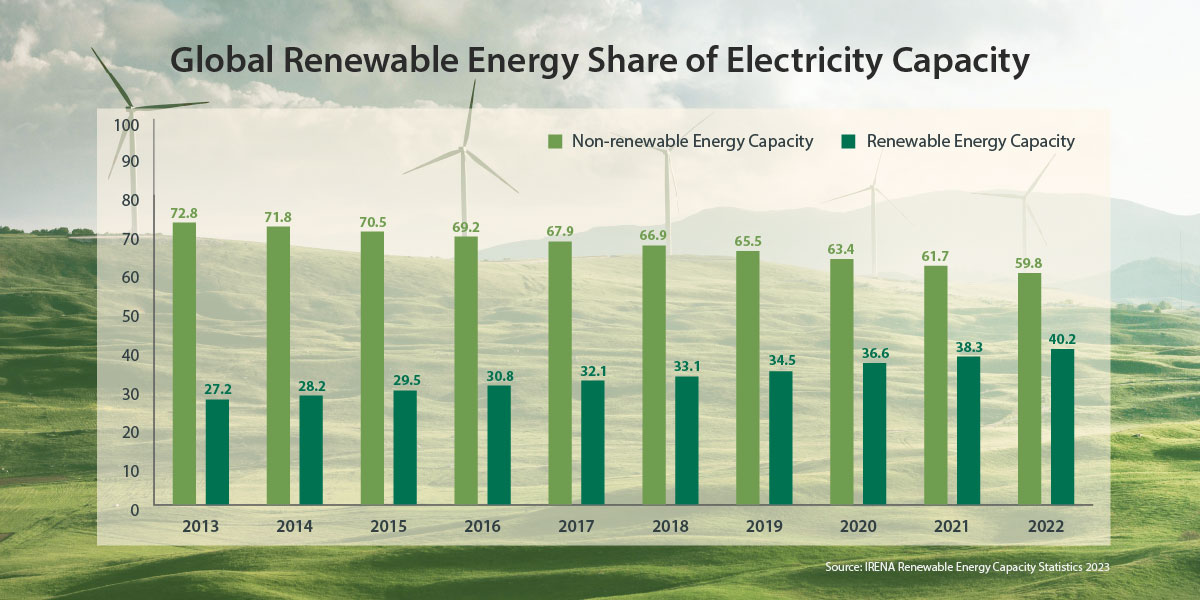
As prices continue to fall and technological development improves, renewables are predicted to become the world’s largest source of electricity generation by 2025. Companies around the world are pursuing renewable energy investment and development in line with these shifting market trends. Hanwha is one such company, with a diverse green energy portfolio spanning solar, wind and hydrogen offering nations around the world a helping hand as they transition to a greener economy and lower their carbon emissions to meet net zero goals.
2. Renewed Biodiversity Conservation Efforts Are Making an Impact
Global recognition of the importance of protecting biodiversity is on the rise, as evidenced by the United Nations Biodiversity Conference (COP15) held in December of 2022. At the conference, 188 governments from around the world gathered and agreed to adopt the Kunming-Montreal Global Biodiversity Framework (GBF), which aims to address biodiversity loss and restore ecosystems and habitats by placing 30% of the planet and degraded ecosystems under protection by 2030.
But what is biodiversity? Biodiversity is the variety of life in the world, including plants, animals, bacteria and more. While many factors contribute to biodiversity loss including pollution, invasive species, habitat disruption, and more, fortunately we have the power to reverse these factors to protect plants and animals around the world.
Although wildlife numbers continue to decline and endangered and threatened species remain in the thousands, there is some good news on the conservation front. Wild tiger populations in Nepal have tripled since 2009, and carnivore populations in Europe — including grey wolves, brown bears, and white-tailed eagles — are bouncing back. In addition, Spix’s macaws, a rare type of parrot declared extinct in the wild, have been reintroduced to their native forest home in Brazil.
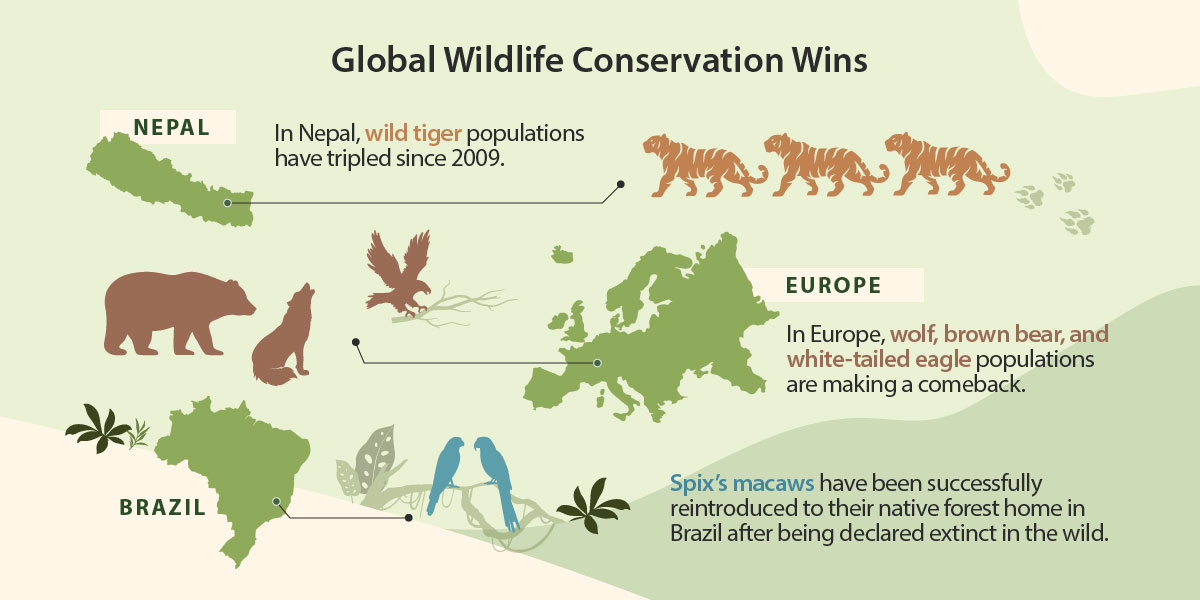
With renewed attention to the role of biodiversity in preserving our ecosystems and climate, nations around the world are dedicating more funding and resources to conserving and restoring nature. But conservation efforts aren’t limited to government and non-profit organizations. Private organizations also have a large role to play by ensuring their business practices have a minimal impact on the environment and work to help restore the planet. Innovations like Hanwha’s Solar Beehive project, which supports the growth of honeybee populations and collects and shares valuable real-time data for academic research and conservation efforts, are just one example of how the private sector can contribute to broader efforts to help plant and animal species on our planet thrive.
3. Reforestation Efforts Are Bearing Fruit
One of the most impactful ways to combat climate change is through our mighty tree friends.
Aside from providing air for us to breathe and a home for 80% of the world’s terrestrial biodiversity, trees absorb tons of carbon emissions generated by humans. Currently, over 8 million hectares of global forests and woodlands are under ecosystem restoration, and many organizations, including Hanwha, are doing their part to ensure continued progress towards revitalizing the planet’s forests and health.
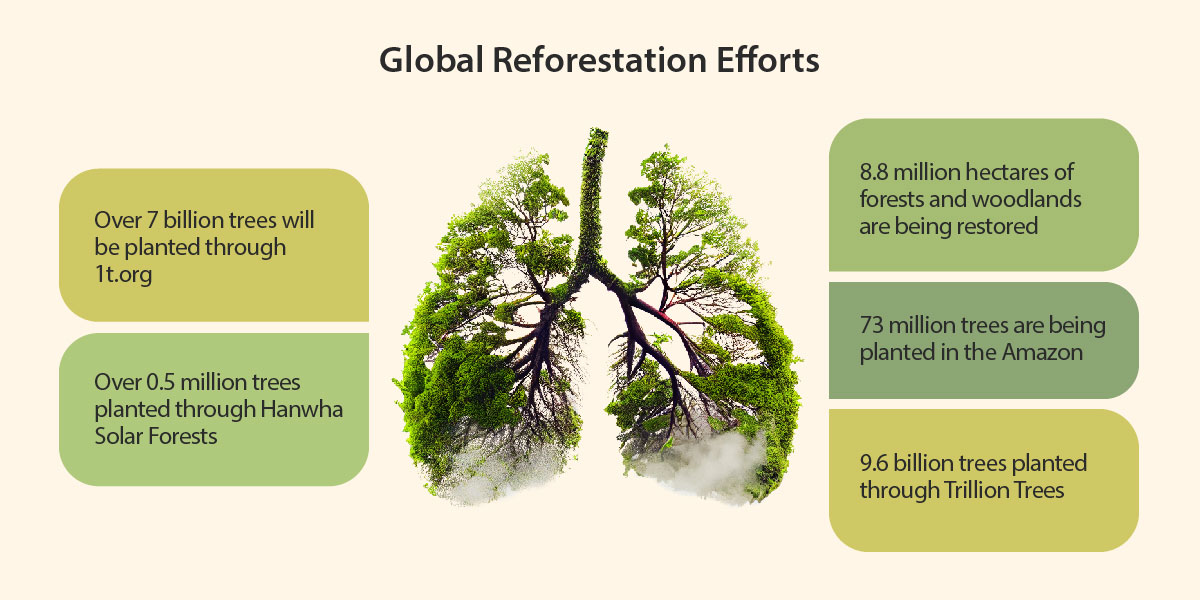
The Trillion Trees initiative has protected and restored around 9.6 billion trees in the last two years, a meaningful step towards combatting the harmful effects of global deforestation. Likewise, one reforestation initiative in the Brazilian Amazon has already achieved 20% of its 73 million tree goal, helping the country further towards its Paris Agreement targets. Additionally, 1t.org, the World Economic Forum’s (WEF) Trillion Trees Platform, has mobilized commitments from 82 companies to conserve, restore and grow over 7 billion trees globally thus far. Hanwha, too, is contributing to the WEF’s Trillion Trees Platform with its innovative Solar Forests, which utilize solar energy to grow and nurture tree saplings, providing a carbon-free contribution to reforestation efforts.
These reforestation efforts and others have the potential to drastically reduce global carbon emissions going forward. In fact, researchers have found that trees could capture two-thirds of total carbon emissions put into the atmosphere if restored by humans.
4. Investments in Climate Tech Are Growing
As climate technology continues to advance and evolve, it has begun to garner notable attention from global investors and entrepreneurs, indicating the value of technology that can help improve the health of our planet. In 2022, climate tech investments accounted for more than a quarter of venture capital funding, with more than 50 billion USD being invested over the year.
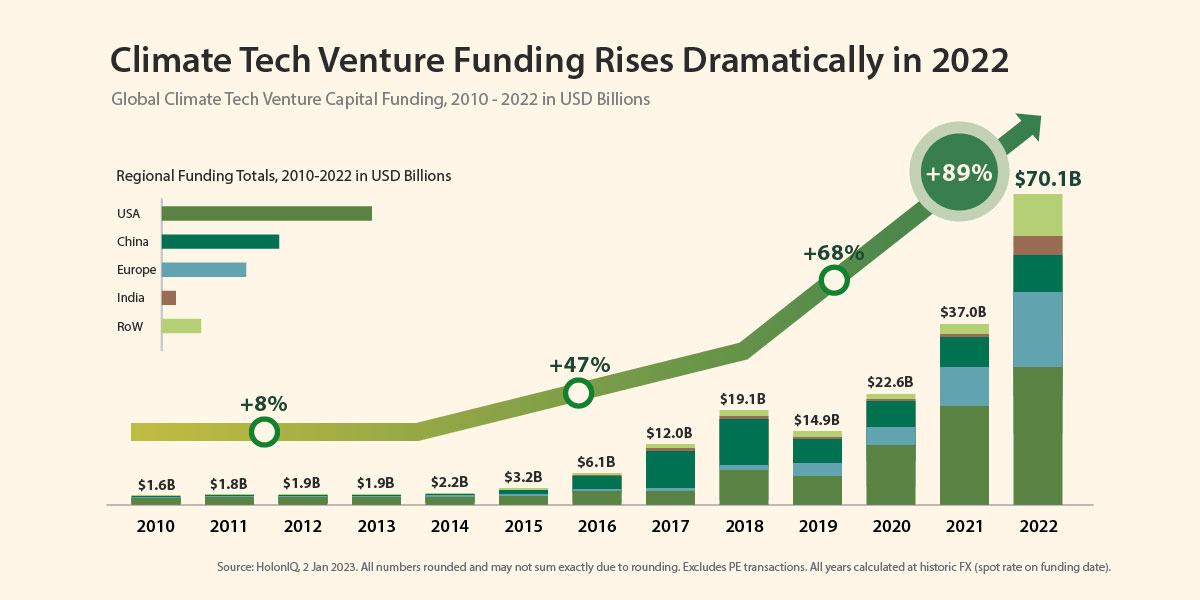
This remarkable growth indicates a shift towards more sustainable technological investment and development for the future. With the potential to expand sustainable technologies such as electric vehicles (EVs), carbon capture, nuclear fission and more, continued investment can boost innovation, reduce the impacts of climate change, and help improve the lives of people all over the world.
One company pushing climate tech development forward is Hanwha, a leading investor in emerging industries that stand poised to create a more sustainable future for everyone. Through investments in companies such as Novoloop, a plastics upcycling startup, and partnerships with companies like LG Energy Solution to develop batteries for sustainable technology including energy storage solutions (ESS) and urban air mobility (UAM), Hanwha is just one of many private sector companies that have pinged climate tech as an opportunity to realize the vision of creating a sustainable future for all.
5. More Countries Are Committing to Ambitious Climate Policies
Government policies have had proven success in incentivizing positive environmental behaviors among citizens, businesses, and other organizations.
To accelerate progress towards net zero goals, more countries around the world are choosing to enact bold climate policies and initiatives, with 136 countries having adopted or proposed net zero targets as of September 2022. This number has seen a massive increase in the past eight years — jumping from less than 10 in 2015 — demonstrating the growing momentum towards commitment to substantial change.
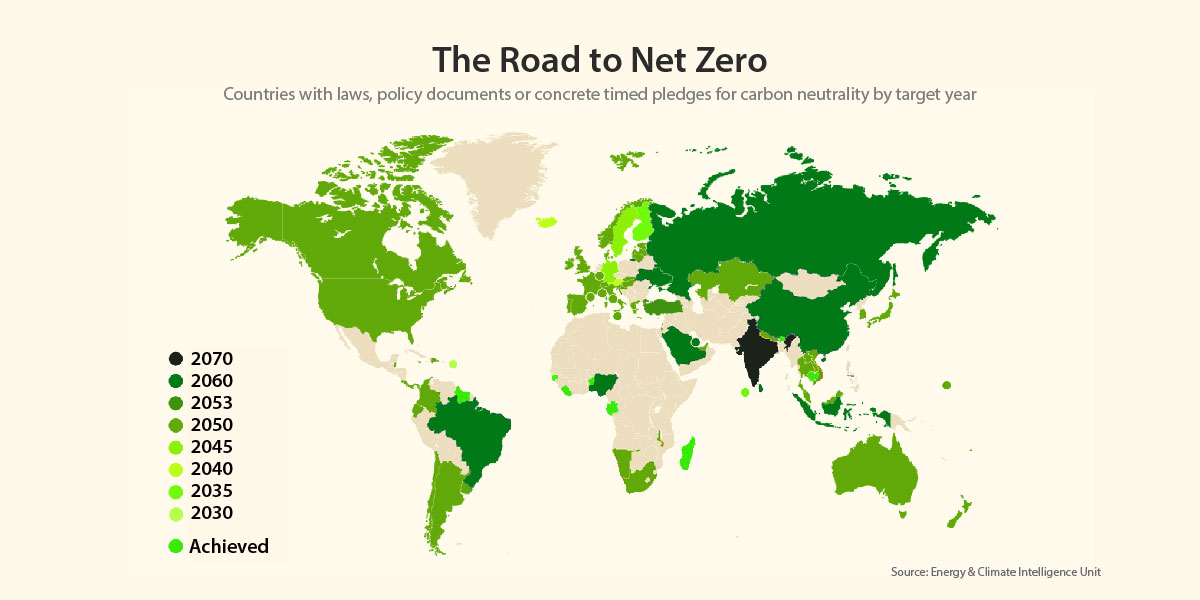
Ambitious policies can be seen all over the globe. In addition to the Inflation Reduction Act (IRA), the U.S. Department of Energy (DOE) is offering 2.5 billion USD in funding for carbon capture projects to help advance technology that can tangibly reduce the amount of carbon in the atmosphere. The Australian government has created a plan spanning terrestrial, marine, and freshwater ecosystems to protect species and conserve the country’s robust biodiversity. China has expanded EV development and off-shore wind farms in service of its pledge to achieve carbon neutrality.
Environmental policies can help encourage consumers and businesses to make climate-positive decisions. Incentives for purchasing electric vehicles in Europe helped increase sales by 55% in the first half of 2020. Government policies can also dissuade climate negative behaviors. After Indonesia removed energy subsidies, the country saw a decrease in both energy usage and carbon emissions.
Climate policies and initiatives also give organizations the support they need to develop infrastructure and technology required to bring nations to net zero. The IRA has incentivized numerous companies, including Hanwha, to invest in building up capacity in the U.S. to innovate, produce, and distribute renewable energies. Thanks to this policy, Hanwha Qcells struck a deal with Summit Ridge Energy (SRE) to provide 1.2 GW of solar panels for SRE’s development pipeline, marking the largest domestic community solar purchase in the U.S. and a meaningful step in supporting further solar energy projects in the coming years.
The tangible results wrought by bold government policies like these encourage exciting, sustainable innovation that can drive meaningful progress for the future.
Going Forward Together

These successes demonstrate the power of cooperation and reinforce the urgent need for strengthened efforts to mitigate the impacts of climate change and bring the world back on track to meet the Paris goals. But while progress is being made across various fronts to combat climate change, it’s clear that the fight is far from over. Governments, companies and citizens all must strive to take the necessary steps to quickly and effectively reduce global emissions. Creating a sustainable future for the planet and all that live on it is a mutual goal that we can all work towards.
Get the latest news about Hanwha, right in your inbox.
Fields marked with * are mandatory.
- Non-employee
- Employee


